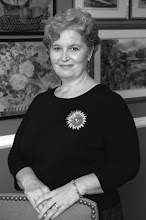
The Musician’s Dystonia Summit that took place this past weekend was the very first event of its kind. The Summit was made possible by sponsorships provided from Allergan, The Medtronic Foundation, Merz, and Jack and Nancy Britts. The DMRF has been funding research on musician’s dystonia for many years, and this event provided an historic occasion to stop and review what the research is telling us and what we need to do next to accelerate improved treatments. The Summit also provided an important opportunity for affected musicians to meet and exchange information. Some of the discussion became very emotional as participants shared the depth of how dystonia shattered their careers and livelihoods—not an uncommon experience for people with all forms of the disorder. We extend our deep appreciation to the musicians who shared their stories and the researchers and physicians who are working tirelessly to meet the needs of this community.
The DMRF was proud to honor Musicians With Dystonia founders Glen Estrin and Steven Frucht, MD for their years of service to the musician’s community. Many thanks for their essential role in bringing the Musician’s Summit to fruition. (Glen and Dr. Frucht are pictured here with David Leisner.)
Many thanks, also, to the performers who shared their talents Friday evening for a spectacular concert by David Leisner, The Fiddling Thomsons, and Billy McLaughlin joined by a quartet including Steven Leung, Dr. Frucht, and Dr. Frucht’s amazing daughters.
New York Times reporter James R. Oestreich covered the Musician’s Summit in today’s issue. Click here to access the article.
Research on musician’s dystonia will help scientists better understand all dystonias. Scientists are challenged to connect the dots between the intense, repetitive practice of specific fine motor movements and the onset of symptoms – this will reveal fundamental information about how and why dystonia occurs.
For more information on musician’s dystonia visit the DMRF website at www.dystonia-foundation.org/musicians






